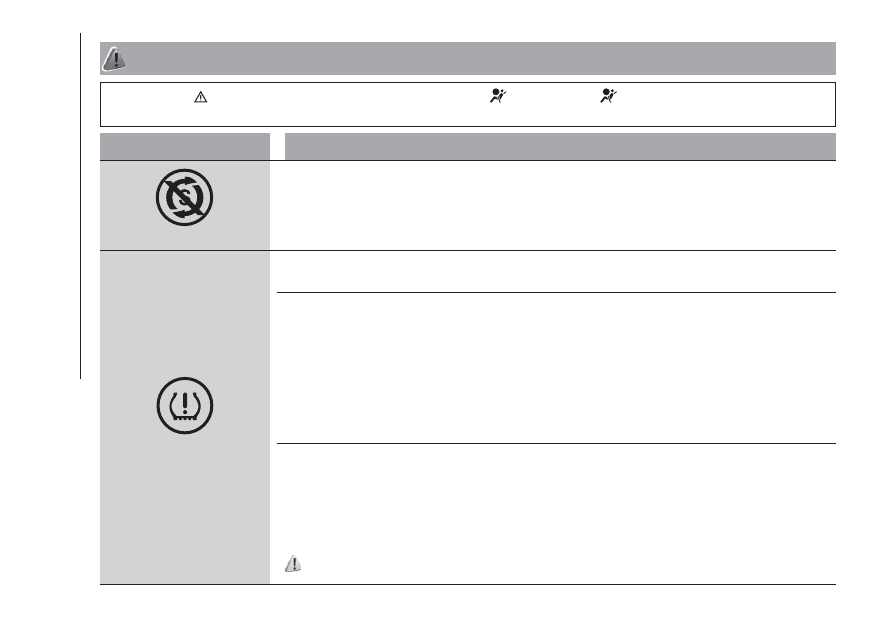Fiat 500L Living (2019 year). Manual - part 4

WARNING
44) Warning light
will blink to indicate possible faults of the warning light
. In this case, the
warning light may not indicate a possible
problem with the airbag restraint system. Contact a Fiat Dealership immediately to have the system checked
Warning light
What it means
yellow
START&STOP SYSTEM OFF
(for versions/markets, where provided)
The deactivation of the Start&Stop system is indicated by the lighting of the warning light or the symbol on
the display along with a dedicated message on the display on some versions.
yellow
iTPMS
(for versions/markets, where provided)
Tyre pressure low
The warning light switches on constantly to indicate that the tyre pressure is lower than the recommended
value, in order to guarantee long tyre life and low fuel consumption, or to indicate a slow loss of pressure.
In this way the iTPMS warns the driver that one or more tyres may be flat and probably punctured. In this
case it is advisable to restore the correct pressure value. Once the normal operating conditions of the
vehicle are restored, carry out the Tyre reset procedure.
IMPORTANT Do not continue driving with one or more flat tyres as handling may be compromised. Stop
the vehicle, avoiding sharp braking and steering.
iTPMS failure/iTPMS temporarily deactivated
The warning light flashes for about 75 seconds and then stays on constantly (along with a dedicated
message on the display) to indicate that the system is temporarily deactivated or faulty. The system goes
back to normal operation when the operating conditions allow it. If this is not the case, carry out the Tyre
reset procedure after restoring the normal operating conditions.
If the malfunction warning persists, contact a Fiat Dealership as soon as possible.
45) 46)
56
KNOWING
THE
INSTRUMENT
P
ANEL